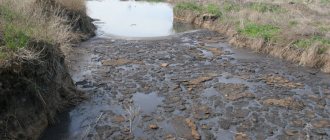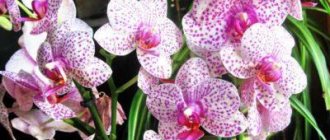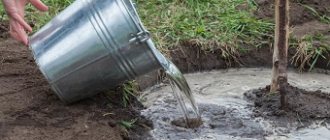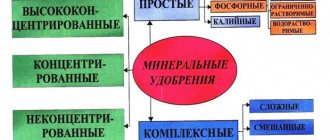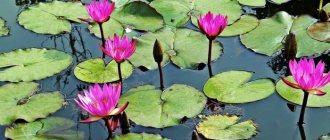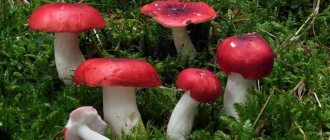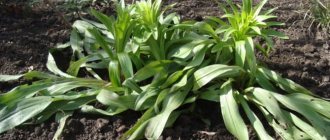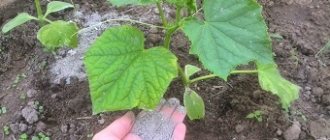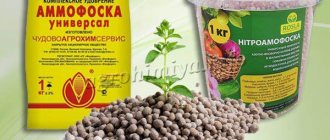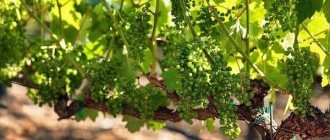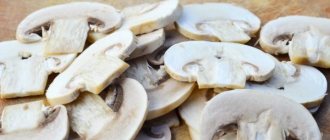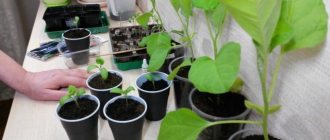Category: Mineral fertilizers Reading time: 11 min · Views: 2,901
Every gardener knows that for a good harvest, plants need to be fed. Complex fertilizers contain several active elements simultaneously and are almost universal. Most often, the soil lacks potassium and phosphorus, which is why phosphorus-potassium fertilizers are so popular.
Phosphorus fertilizers
Phosphorite is a mineral substance that contains large amounts of phosphorus. Fertilizers containing this element are sold in specialized stores. The choice is quite large. Superphosphate or double superphosphate is excellent for plants.
Superphosphate can be purchased in powder or granule form. Both options will be effective. Using the powder form of the drug will give results faster. Granulated phosphorite takes longer to be absorbed by the soil; plants will have to wait.
The main substance is gray in color and quickly dissolves in water. It contains 15-20% phosphoric acid. It is for this reason that experienced gardeners do not advise using phosphorus fertilizers in areas where the soil is acidic.
Superphosphate is recommended to be applied in the fall. Since the powder cakes in the soil, it is best not to use it on fruit trees and shrubs. Such plants are more suitable for preparations in granular form. But don't go overboard with the volume. The granules are not so hygroscopic. Once phosphoric acid gets into the soil, it practically does not move; it accumulates in one place. That is why it is necessary to apply the drug deeply - to the level of the root system.
Double superphosphate differs in that it contains significantly more phosphoric acid. It contains 40-50%. The drug should not be used in acidic or slightly acidic soils. Also, double superphosphate should not be used to feed berry and fruit trees and shrubs.
Like regular superphosphate, the drug can be purchased in powder form or in small granules. Fertilizers are applied in the fall after harvesting. The basic rule is to adhere to the instructions and strictly follow the dosage.
Description, purpose
Phosphorus-potassium is the main type of fertilizer for flowering plants. It is these substances that are responsible for the intensity and duration of flowering, leaf formation, and the richness of the shades of foliage and buds. Without fertilizing with such compounds, neither garden beds nor flowerpots on the windowsill will please the owners.
Related article:
How to use nitrophoska
Each of the elements of complex compositions plays its role. Phosphorus is a stimulant and one of the main participants in metabolic processes - metabolic, fission, energy. If there is not enough of it in the soil, processes such as respiration and photosynthesis are suspended or stopped, and the cell membrane becomes impenetrable and resistant to nutrition from the air. In addition, the element helps the root system develop. Flowers need potassium when they emerge from the dormant period. Without it, they may not cope with growing foliage, setting buds and flowering.
Indoor begonia Elatior
It is impossible to use phosphorus-potassium fertilizers to fertilize the soil in winter; flowers need them in spring. But there are exceptions - azalea, Decembrist, cyclamen and others, whose flowering period occurs in the autumn and winter months.
Potassium-based preparations
Potash fertilizers are another type of mineral-based fertilizer. Potassium preparations can be used independently, or in combination with nitrogen fertilizers. Most often, products with potassium are sold in specialized stores in the form of powders, that is, in dry form.
The main types of potash fertilizers are:
- Potassium salts. They contain 30-40% potassium oxide. Salts can be of several shades: white, gray and pink. The crystals contain large amounts of chlorine and sodium. Such fertilizing is an ideal option for soddy-podzolic acidic soil. Potassium salts are best suited for berry plants.
- Potash. It contains 50% potassium oxide. The substance quickly dissolves in water. Potassium carbonate tends to accumulate in the soil because it is hygroscopic. It is an alkaline type of fertilizer, so it can be used in slightly acidic and acidic soils.
- Potassium chloride. This is a fine-crystalline powder containing 50-60% potassium oxide. The drug can be of different shades: from gray to pink. Fertilizers do not move in the soil, accumulating in one place, so they must be applied deeply - to the roots. In summer, when it is especially hot outside, it is not recommended to use potassium chloride, as it salts and dries out the soil.
- Calimagnesia. It contains 30% potassium oxide. Calimagnesia is a crystalline powder of different shades: white, pink and gray. The drug is ideal for light soil in which plants are planted that are in dire need of both potassium and magnesium.
- Potassium sulfate. The fertilizer contains 45% potassium oxide. Sold in powder form, which can be yellow, white or gray. The drug dissolves easily and quickly in water. Since there is no chlorine in potassium sulfate, it can be used for various types of soil.
You may be interested in: How to properly plant petunia in a pot and care for it?
Potassium-based fertilizers can be applied both in spring and autumn. They are suitable for use both dry and diluted.
We calculate norms for each crop
The first source of nitrogen is the soil, and first of all you should be guided by its composition; it differs significantly in different regions and climatic zones. So, for example, sandy terrain needs such feeding, but black soil, on the contrary, is rich in nitrogen. Humus contains a huge amount of such macronutrients. In addition, pay attention to the plant, because different crops need different amounts of fertilizer. For example, legumes need less N, unlike tomatoes, eggplants, beets, potatoes and other fruit and berry crops.
The average dose of nitrogen is considered to be 0.6–0.9 kg of substances per 100 square meters with the main application. But during subsequent fertilizing, this norm is significantly reduced and for potatoes, flowers and vegetables it is 0.15–0.2 kg per 100 m2; for fruit and berry crops, 0.2–0.3 kg is sufficient for such an area. If we are talking about foliar feeding, then prepare a 5% solution. Dilute 50 g of powder in 10 liters of water; this volume is usually enough to treat 1–2 acres.
Nitrogen-phosphorus fertilizer is obtained by mixing three elements in a certain proportion. Today you can purchase a ready-made composition.
To saturate the soil with potassium, grain ash, potassium chloride and potassium magnesium are used. The dosage of the first two is 40 g per square, and the last 50 g for the same area. The dry method is most often used. Select such fertilizers very carefully. Thus, Cl has a negative effect on the condition of the soil, so potassium chloride is added mainly to sandy soil and in limited quantities. In addition, it is not recommended to use it for feeding tomatoes and potatoes.
To fertilize a square meter of land on which greenery grows, you will need 30 g of double superphosphate or 60 g of simple superphosphate. But to feed the trees, we increase the dose 20 times. If we are talking about greenhouse seedlings, then approximately 100 g of substance is consumed per 1 m2. It is best to choose granulated superphosphate, since powdered superphosphate, when interacting with the soil, quickly becomes inaccessible to plants. Is your site dominated by acidic soil? It should be prepared at least a month before feeding. To do this, add 200 g of ash or half a liter of lime mixture into it.
Nitroammophoska and nitrophoska
Nitroammofoska is a popular and effective fertilizer. It contains potassium, nitrogen and phosphorus. The drug is sold in granular form. Most often used before or during sowing. The solution is an additional feeding. In nitroammophoska, the main components are very concentrated. Nitrogen is easily absorbed by plants. Phosphorus is contained in the form of monocalcium phosphate, ammonium phosphate and dicalcium phosphate. The number of main components varies and is labeled accordingly. The most popular brand is 16-16-16 with the same content of potassium, nitrogen and phosphorus.
Nitroammofosk has a number of advantages:
- high concentration product;
- granules can be stored for a long time without caking;
- each granule contains the main components;
- quickly dissolves in water;
- increases productivity.
However, fertilizer also has several disadvantages:
- nitrates are formed in the soil;
- inorganic substance;
- It is highly flammable, so the substance should not be heated.
Nitroammophoska is suitable for clay soils and chernozems. The speed and difficulty of penetration of the drug depends on how dense the soil is. For this reason, it is recommended to apply fertilizers to clay soil in the fall, and to light (sandy) soil in the spring.
Nitrophoska is a classic mineral fertilizer. It contains three main components that plants need most to develop and grow: potassium, nitrogen and phosphorus. These components are included in nitrophoska in the form of salts: potassium nitrate, calcium chloride, ammophos, superphosphate, precipitate, ammonium chloride, ammonium nitrate.
The percentages of potassium, nitrogen and phosphorus may vary. In accordance with this, the product is labeled. To feed garden crops, use the 16-16-16 brand, that is, the one where the main components are contained in the same quantity.
Nitrophoska can be of different types. It is divided into groups depending on the use of the product and the method by which it is obtained.
The main types of nitrophoska are:
- Sulfate. It contains a large amount of calcium, which stimulates flowering. Therefore, the sulfate variety is suitable for ornamental shrubs, trees and flowers.
- Sulfate. Added at the time of planting. It is used to feed cucumbers, tomatoes, beans, and cabbage. Sulfur forms plant-type proteins. It prevents pests due to its fungicidal action.
- Phosphorite. It is used to feed tomatoes, since the main substance in the preparation is phosphorus, thanks to which fiber is better absorbed. Timely application of fertilizer guarantees a high-quality and abundant harvest. In addition, the tomatoes will be stored in good condition longer.
Potassium monophosphate and diammophoska
Potassium monophosphate is a popular ballast-free potassium-phosphorus fertilizer. Other names for the drug are dihydrogen orthophosphate and monopotassium phosphate. In specialized stores it is sold in dry form (powder) and granulated. The beige substance quickly dissolves in water, and then the resulting liquid composition is watered or sprayed on the plants. It is important to follow the instructions and not overdo it with the dosage: adding more fertilizer will not give a positive result; on the contrary, it can have a detrimental effect on the crops.
Important information! If the monophosphate is not beige, but yellow, it contains iron and sulfur. And this already indicates that the drug is defective and not suitable for use.
Potassium monophosphate has a number of advantages:
- it has an optimal ratio of potassium and phosphorus;
- since the substance quickly dissolves in water, it migrates in the soil and is therefore easily absorbed by plants;
- thanks to fertilizing, shoots with peduncles are formed on the sides of the plant;
- compatibility with pesticides;
- the drug is a prophylactic against fungal plant diseases and powdery mildew.
You may be interested in: How and how to fertilize roses in spring?
You can feed vegetable crops (potatoes, garlic, tomatoes, cucumbers, cabbage, eggplants), fruit and berry trees and shrubs (grapes, strawberries, apple trees, plums, apricots), ornamental plants and flowers on the lawn and garden (roses, chrysanthemums and others).
Diammofoska is a complex mineral fertilizer that contains nitrogen, potassium, and phosphorus. The last two components are contained in the fertilizer in larger quantities. The drug is also called diammonium phosphate. It is universal, and therefore can be applied to various types of soil. Fertilizer is applied in the spring during planting of seedlings, and then diammofoska is used throughout the entire flowering period.
Phosphorus accounts for 20% of the fertilizer mass. It is included in the form of an oxide. This substance plays an important role during the growing season. Plants need potassium not only during the growing season, but also during flowering. Fertilizing with potassium and phosphorus improves the taste of products. In addition, they last longer.
Diammofosk is fast-acting: it gives an effect almost immediately after application to the soil. When the soil is prepared, it is dug up, and then it is necessary to adhere to the application rate - 20 grams per square meter. If the soil is not cultivated, you need to apply 30 grams per square meter. For protected soils, the application rate is 40 grams for the same area.
How are mineral components added to the soil?
From all that has been said above, we see that all these elements vital for plants are introduced in approximately one period. Therefore, it makes sense to think about using nitrogen-phosphorus-potassium fertilizers; it’s easier and more convenient, which means that even a novice gardener can take care of his children.
It should be noted that they are introduced in any season; the ratio of nutrients is simply adjusted. In spring, fertilizing is necessary to prepare the soil, filling it with useful minerals. Fertilizer is often applied while plowing fields. However, if you want to save a little, then in your garden you can add it directly to the holes before planting, although then you will have to spend a lot more effort.
With the onset of summer, fertilizing is carried out during watering, then the plants will absorb a maximum of micro- and macroelements, which will contribute to a good harvest. This season, residents of garden beds especially need potassium, which will help them survive the drought. But by fertilizing the soil in the fall when digging the beds, you normalize its balance. After all, during the season, agricultural crops have almost completely depleted land resources, and next year we will certainly want to harvest an excellent harvest again.
It is worth noting that while nitrogen and potassium can be applied superficially, the use of phosphorus fertilizers requires significant grounding, of course, without fanaticism, just as close as possible to the root system. Phosphoric acid moves very quickly and becomes fixed in the soil, and our goal is for it to saturate the plant. In addition, the phosphorus component should not be mixed with the soil too thoroughly.
Other potassium-phosphorus fertilizers
One of the best potassium-phosphorus fertilizers is AVA. Its main advantage is that it does not contain nitrogen. The drug remains in the soil for a long time both in autumn and winter. The product must be applied before the seeds are sown. The main components of the product are potassium and phosphorus, but the composition also includes other elements that have a beneficial effect on plants, accelerating their growth and development.
There are three methods of using AVA:
- a solution is prepared with which to water the plants;
- the product is mixed with planting material, after which sowing is carried out;
- seeds are soaked in solution before planting.
An equally effective means for feeding various crops is “Autumn” - a universal preparation. The main substance is potassium (it contains up to 18%). In addition, “Autumn” is saturated with phosphorus, calcium, magnesium and boron. Fertilizer must be applied in the fall, which is clear from the name of the drug. When digging the soil, gardeners recommend applying no more than 60 grams of product per square meter. When the soil is dug up for the second time, that is, in the spring, the use of “Autumn” is also allowed. For greater effectiveness, you can combine the drug with nitrogen-containing agents. During hilling and loosening of plants after planting, experienced specialists recommend introducing “Autumn” at a dose of 15-30 grams. Thanks to this, the crop will bloom better and bring a larger harvest.
Bone meal is another common fertilizer that contains both phosphorus and calcium, as well as other minerals. The product can be used as a top dressing throughout all seasons. Bone meal is made from the bones of the skeleton, hooves, and horns of cattle. Since the fertilizer is natural (organic), it is completely safe for plants and soil. The soil is saturated with useful substances that remain in the ground for six to eight months. During this time, the process of decomposition of the drug occurs due to microorganisms contained in the soil. As a result, beneficial elements are released and become easily digestible for the plant. Thanks to bone meal, the soil is not oversaturated with nitrates and pesticides.
It has been proven that potassium-phosphorus fertilizers are quite effective. It is necessary to feed the plants with products, which stimulates their development and fruitfulness. Stick to the laying norm, follow the instructions - and the crops will delight you with color and a good harvest.
